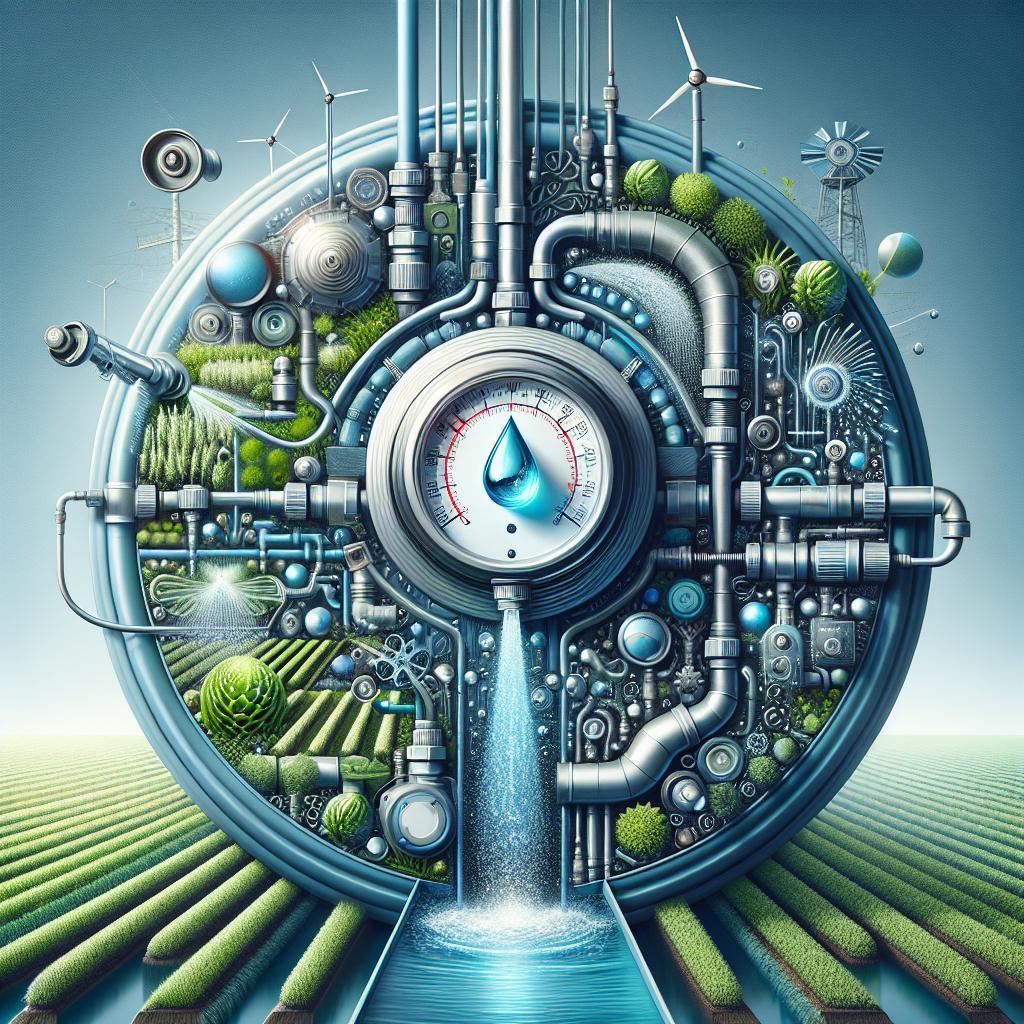This post may contain affiliate links which means I may receive a commission for purchases made through links. Learn more on my Private Policy page.
Introduction
Imagine stepping into your garden, greeted by a vibrant tapestry of lush greens and colorful blooms, all thriving under the warm sun. The secret to this flourishing paradise? A well-maintained irrigation system that delivers just the right amount of water where it’s needed most. Ensuring that your irrigation system maintains proper water pressure is key to achieving this dream landscape.Not only does it foster healthy plants, but it also conserves water, saves on utility bills, and enhances overall garden aesthetics. In this article, we’ll dive into the best practices for maintaining optimal water pressure in your irrigation system, turning your outdoor space into a thriving oasis. So grab your gardening gloves and let’s dig into some friendly tips that will keep your plants happy and hydrated!
Understanding Water Pressure Fundamentals for Effective Irrigation
Understanding water pressure is crucial for the efficient operation of any irrigation system. Proper pressure ensures that water reaches all areas of your garden or agricultural field evenly, promoting healthy plant growth. Maintaining optimal pressure involves several best practices, such as:
- monitoring Your Water Source: Regularly check the flow rate of your water source to ensure it meets the needs of your irrigation system.
- Using Pressure Regulators: Install pressure regulators to prevent excessive pressure that can damage pipes and emitters.
- Conducting Regular Maintenance: Periodically inspect your system for leaks or blockages that can affect water flow.
In addition, it’s beneficial to understand the relationship between elevation and pressure. As water is distributed over uneven terrain, the pressure can fluctuate, affecting irrigation quality. To manage this,consider the following:
- Adjusting Pump settings: Fine-tune your pump settings according to the elevation of your irrigation zones.
- Designing with Pressure in Mind: Plan your irrigation layout to minimize elevation changes where possible.
- Utilizing Water Storage Tanks: Incorporating storage tanks can definitely help stabilize pressure during peak usage times.
| Pressure Level | Impact on Irrigation |
|---|---|
| Low Pressure | Inefficient distribution, drought stress on plants |
| Optimal pressure | Even water distribution, healthy plant growth |
| High Pressure | Piping damage, uneven water distribution |

identifying Common Water Pressure Issues and their Solutions
Water pressure issues can lead to inefficient irrigation, affecting plant health and water usage. Common indicators of water pressure problems include inconsistent flow, puddles forming in your yard, or dry patches amidst lush areas. These symptoms frequently enough point to underlying concerns such as clogged filters, damaged pipes, or incorrect system design. To address these, regularly inspect your system for debris buildup and clean filters to maintain optimal flow. Additionally, check for leaks in your plumbing to prevent pressure fluctuations and ensure that your irrigation layout is appropriate for the plant types and soil conditions in your garden.
When facing low water pressure, consider adjusting the settings on your valves—these can often be the culprit in restricting flow. If the problem persists, installing a pressure regulator can definitely help maintain a consistent level. Conversely, if your irrigation system is experiencing to much pressure, incorporating pressure-reducing valves is essential. For both scenarios, keep a maintenance log for tracking repairs and checkups to remain proactive in your system’s health. here’s a simple checklist to help you maintain proper water pressure:
- regularly clean filters and screens.
- Inspect for leaks and repair as needed.
- Adjust valve settings to optimize flow.
- Track maintenance activities for future reference.

Smart tools and Techniques for Monitoring Your System
Keeping a close eye on your irrigation system’s water pressure is crucial in ensuring that your plants receive the right amount of moisture.Smart monitoring tools enable you to catch issues before they escalate, saving both time and resources. Consider implementing:
- Pressure Sensors: These devices are perfect for real-time monitoring; they alert you to any abrupt changes in pressure.
- Smart Controllers: Integrate these with your irrigation system to adjust watering schedules and pressure automatically based on the weather forecasts.
- Flow Meters: With these, you can track water flow and identify discrepancies that may indicate leaks or blockages in your system.
Additionally,employing simple yet effective techniques can considerably enhance your monitoring efforts. Regularly conducting pressure checks at various points in your system helps you establish a baseline for ideal pressure levels. Tracking these values can be made easier with:
| Monitoring Method | frequency | Notes |
|---|---|---|
| Visual Inspection | Weekly | Look for leaks and clogs. |
| Pressure Gauge Check | Monthly | Record readings for analysis. |
| Software Analysis | Bi-Annually | Review trends to optimize settings. |
Incorporating these tools and techniques into your routine not only ensures optimal water pressure but fosters the long-term health of your irrigation system.

Cultivating a Maintenance Routine for Long-Lasting Efficiency
establishing a robust maintenance routine is pivotal in ensuring your irrigation system operates at peak efficiency. Regularly checking and adjusting water pressure allows for optimal irrigation performance, ensuring that every inch of your landscape receives the moisture it needs. Here are some practical steps to integrate into your routine:
- Inspect pressure Regulators: Regularly check and clean pressure regulators to prevent blockages that can lead to fluctuating water pressure.
- Monitor Water Measurements: Use a simple pressure gauge to assess if the water pressure matches the recommended levels for your system.
- Check for Leaks: Periodically inspect pipes and fittings for leaks, which can drastically affect water pressure and efficiency.
- Seasonal Adjustments: Adjust the system in response to seasonal changes in water demand and environmental conditions.
Implementing a systematic approach to maintenance can not only improve water pressure but also extend the lifespan of your irrigation system. Consider keeping a log of maintenance activities, including dates, observations, and any issues encountered. Below is a simple table for tracking your maintenance routine:
| Date | Activity | Notes |
|---|---|---|
| MM/DD/YYYY | Checked Pressure Regulators | No issues found |
| MM/DD/YYYY | Inspected for Leaks | Minor leak fixed |
| MM/DD/YYYY | Pressure Gauge Reading | optimal levels |
The Conclusion
As we wrap up our deep dive into the world of irrigation systems and their vital water pressure, remember that nurturing your garden and landscape is much like tending to a friendship—it requires attention, care, and a little bit of know-how. By following these best practices, you’ve equipped yourself with the tools necessary to keep your irrigation system functioning at its prime, ensuring your plants receive the right amount of hydration to thrive.
So,whether you’re watering a sprawling garden,a quaint vegetable patch,or a cozy flower bed,take a moment to revel in the beauty of a well-maintained irrigation system. With proper water pressure, not only will your plants flourish, but you’ll also save time, resources, and perhaps even a bit of worry. Remember, a happy garden is a reflection of your dedication and effort!
Thank you for joining us on this journey to better irrigation practices.Here’s to celebrating lush greenery, vibrant blooms, and a thriving outdoor oasis—all nourished by the perfect balance of water pressure! Happy watering! 🌻💧
This post may contain affiliate links which means I may receive a commission for purchases made through links. Learn more on my Private Policy page.

